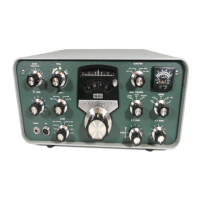w) Signal to Noise Ratio (SNR)
w.1. Signal to Noise Ratio (Theory)
The noise performance and hence the signal to noise ratio is a key parameter for any
radio receiver. The signal to noise ratio, or SNR as it is often termed is a measure of the
sensitivity performance of a receiver. This is of prime importance in all applications from
simple broadcast receivers to those used in cellular or wireless communications as well
as in fixed or mobile radio communications, two way radio communications systems,
satellite radio and more.
There are a number of ways in which the noise performance, and hence the sensitivity
of a radio receiver can be measured. The most obvious method is to compare the signal
and noise levels for a known signal level, i.e. the signal to noise (S/N) ratio or SNR.
Obviously the greater the difference between the signal and the unwanted noise, i.e. the
greater the S/N ratio or SNR, the better the radio receiver sensitivity performance.
As with any sensitivity measurement, the performance of the overall radio receiver is
determined by the performance of the front end RF amplifier stage. Any noise
introduced by the first RF amplifier will be added to the signal and amplified by
subsequent amplifiers in the receiver. As the noise introduced by the first RF amplifier
will be amplified the most, this RF amplifier becomes the most critical in terms of radio
receiver sensitivity performance. Thus the first amplifier of any radio receiver should be
a low noise amplifier.
w.1.1. Concept of signal to noise ratio SNR
Although there are many ways of measuring the sensitivity performance of a radio
receiver, the S/N ratio or SNR is one of the most straightforward and it is used in a
variety of applications. However it has a number of limitations, and although it is widely
used, other methods including noise figure are often used as well. Nevertheless the S/N
ratio or SNR is an important specification, and is widely used as a measure of receiver
sensitivity.
w.1.2. Signal to noise ratio
The signal to noise ratio is the ratio between the wanted signal and the unwanted
background noise.
The difference is normally shown as a ratio between the signal and the noise (S/N) and
it is normally expressed in decibels. As the signal input level obviously has an effect on
Signal to Noise Ratio (SNR) Page 52

